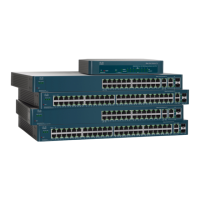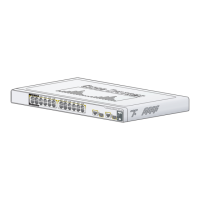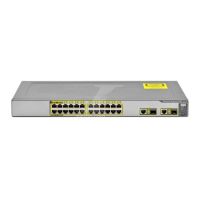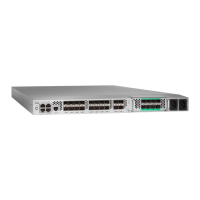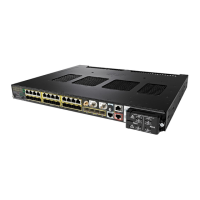VLAN Management
Voice VLAN
277 Cisco 500 Series Stackable Managed Switch Administration Guide
14
There may or may not be separate voice and data VLANs. The phones and
VoIP endpoints register with an on-premise IP PBX.
• IP Centrex/ITSP hosted: Cisco CP-79xx, SPA5xx phones and SPA8800
endpoints support this deployment model. For this model, the VLAN used
by the phones is determined by the network configuration. There may or
may not be separate voice and data VLANs. The phones and VoIP
endpoints register with an off-premise SIP proxy in “the cloud”.
From a VLAN perspective, the above models operate in both VLAN-aware and
VLAN-unaware environments. In the VLAN-aware environment, the voice VLAN is
one of the many VLANs configured in an installation. The VLAN-unaware scenario
is equivalent to a VLAN-aware environment with only one VLAN.
The device always operates as a VLAN-aware switch.
The device supports a single voice VLAN. By default, the voice VLAN is VLAN 1.
The voice VLAN is defaulted to VLAN 1. A different voice VLAN can be manually
configured. It can also be dynamically learned when Auto Voice VLAN is enabled.
Ports can be manually added to the voice VLAN by using basic VLAN
configuration described in the Configuring VLAN Interface Setting section, or by
manually applying voice-related Smartport macro to the ports. Alternatively, they
can be added dynamically if the device is in Telephony OUI mode, or has Auto
Smartports enabled.
Dynamic Voice VLAN Modes
The device supports two dynamic voice VLAN modes: Telephony OUI
(Organization Unique Identifier) mode and Auto Voice VLAN mode. The two
modes affect how voice VLAN and/or voice VLAN port memberships are
configured. The two modes are mutually exclusive to each other.
• Telephony OUI
In Telephony OUI mode, the voice VLAN must be a manually-configured
VLAN, and cannot be the default VLAN.
When the device is in Telephony OUI mode and a port is manually
configured as a candidate to join the voice VLAN, the device dynamically
adds the port to the voice VLAN if it receives a packet with a source MAC
address matching to one of the configured telephony OUIs. An OUI is the
first three bytes of an Ethernet MAC address. For more information about
Telephony OUI, see Telephony OUI.
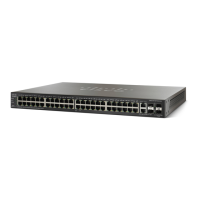
